This is a continuation of a report on new ways to look at depth of field. The series starts here:
Many of us use our fancy cameras occasionally to produce low-resolution images for the web. We should have tons of DOF in that case, right? And lens quality shouldn’t matter? And how does that object-field stuff work in that case?
I’ve got answers.
I set up the lens sharpness modeler for a 55mm f/1.4 lens with the Nikon aberrations focused at infinity, and a sensor pixel pitch of 50um, which gives us a 720×480 pixel image from our modeled full frame camera.
Here’s what we get, in first the image plane and then the object field:
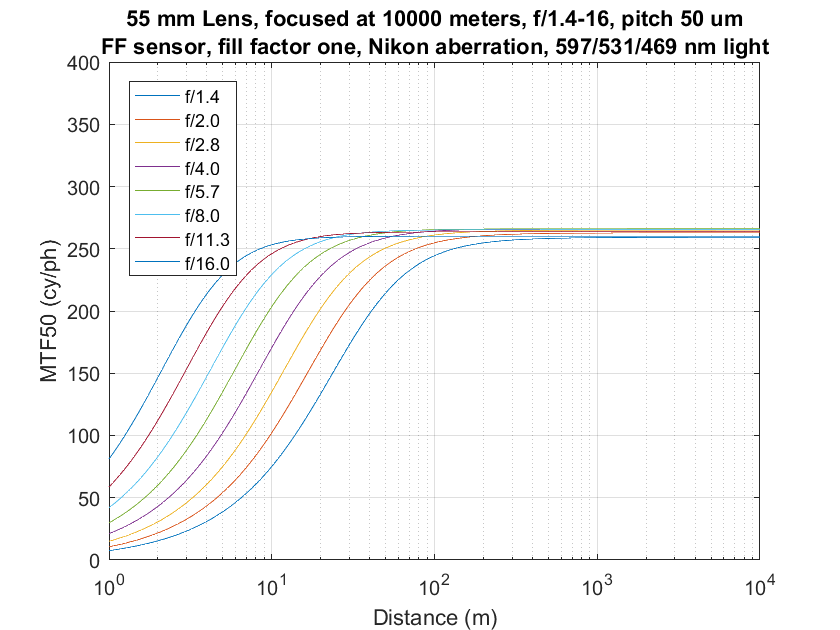
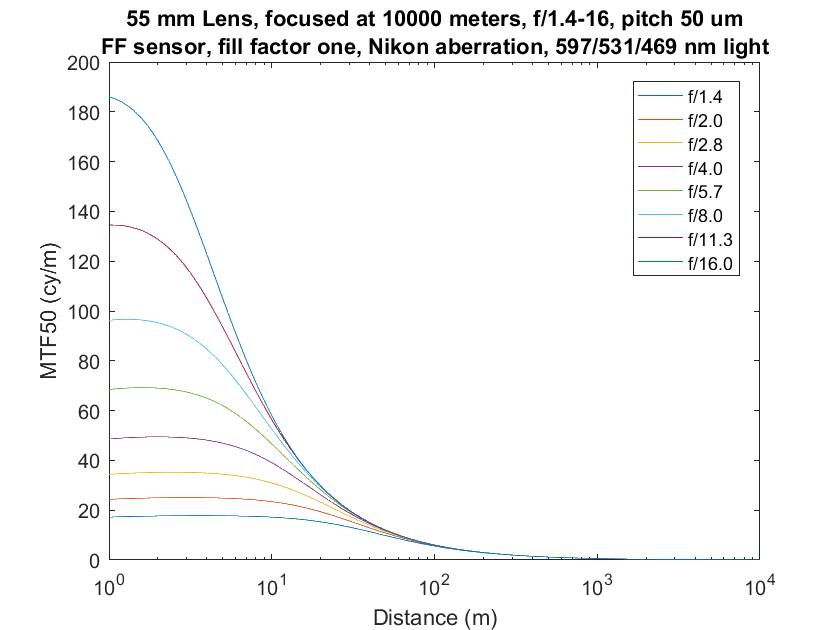
What’s different from the full-res images?
First off, the resolution, as measured in the image plane as MTF50 cycles per picture height, and in the object field as MTF50 cycles per meter, is much lower. No surprise there.
Next, diffraction and lens aberrations make little difference; in the image plane, everything is just about as sharp at infinity, so we can stop down as much as we’d like with impunity.
Also, as predicted, there’s ton more DOF, with hyperfocal distances for narrow f-stops dropping to below ten meters. Oh, you expected even more? To be frank, so did I.
But the behavior in the image field that we observed before, where the sharpness starts to fall well before the image plane measures have gotten to the good part, still happens.
With the Otus lens model:
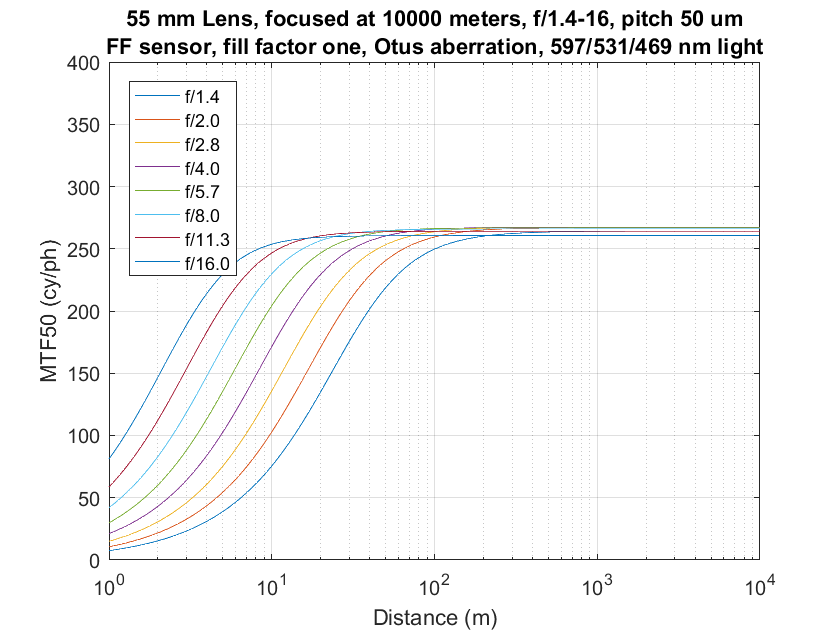

Pretty much the same thing; you don’t need an expensive lens for the web.
No surprises here, except maybe the way the object field behaves.
If we focus at 10 meters:
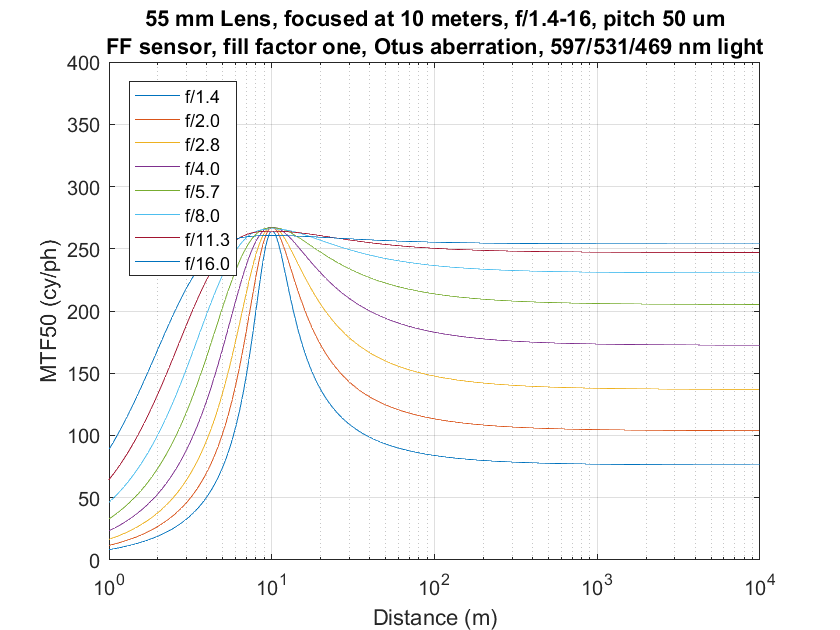
The DOf at narrow f-stops is so great that we get hardly any falloff in sharpness at infinity, and improved near-object image plane sharpness.
In the object field:
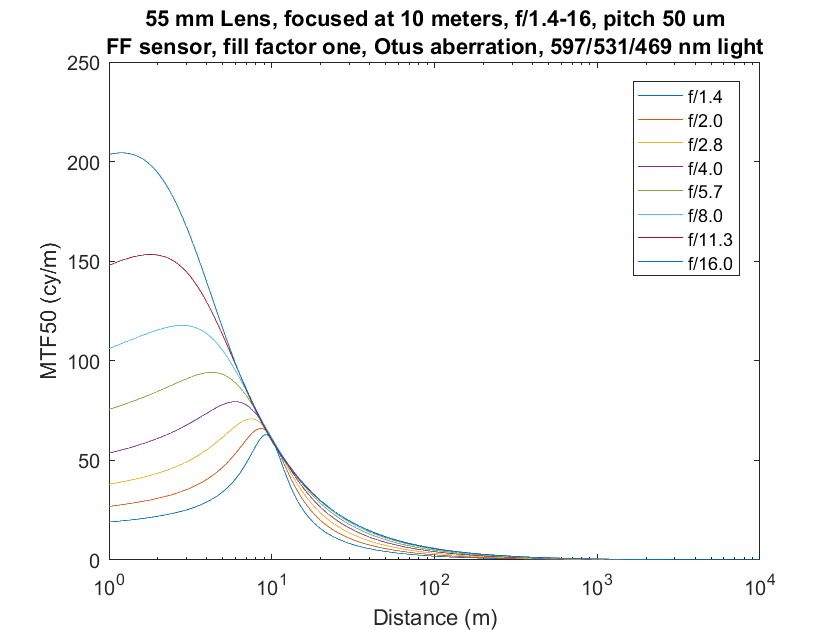
At f/8, f/11, and f/16, we actually get closer to the flat-with-distance object field sharpness that was predicted by Merkinger than we did with the lens focused at infinity.
Jim,
Could also you make a chart for ‘macro’ , say 0.1m, to see how much depth of focus is gained in this case by reducing the size? Thank you